
Following my post (see here) on how sheep and cattle were still grazing the slopes of Beinn Luibhean, despite the landslips, Andy Wightman sent me information about the ownership of the land from his website Who Owns Scotland (see here):
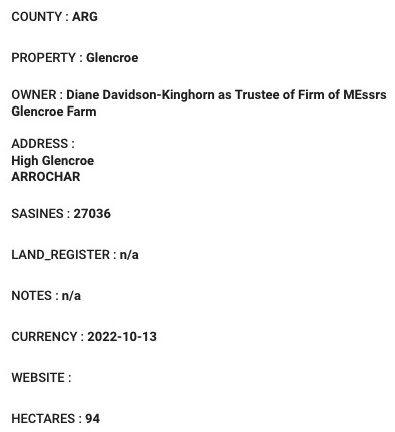
This information, obtained from the Register of Sasines, is not yet online at the Registers of Scotland – for £12 a year it is well worth individuals subscribing to the Who Owns Scotland data base.
The Registers also don’t yet show the land above on Beinn Luibhean which Forest and Land Scotland (FLS) appear to have bought from Glen Croe farm for £600k in 2017-18 (see here for FLS register of acquisitions). The land is, however, shown on Who Owns Scotland:
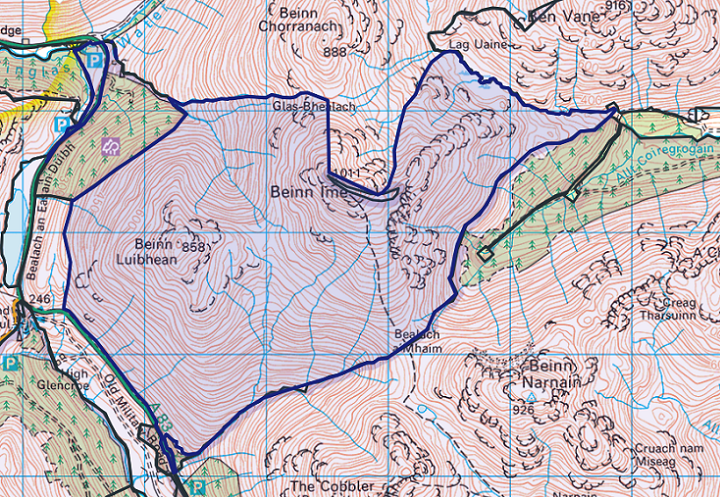
Who Owns Scotland also reveals that the size of the property is 736 hectares and was “recorded” in April 2019 when it was described as “currently undergoing land registration”. Four years later and the information is still not available online at the Registers of Scotland despite the public interest issues.
The information from Andy Wightman about the ownership of Glen Croe Farm enabled me to search the UK Defra Rural Payments data base (see here). That shows two payments to Messrs Glen Croe Farm for the years 2020 and 2021:
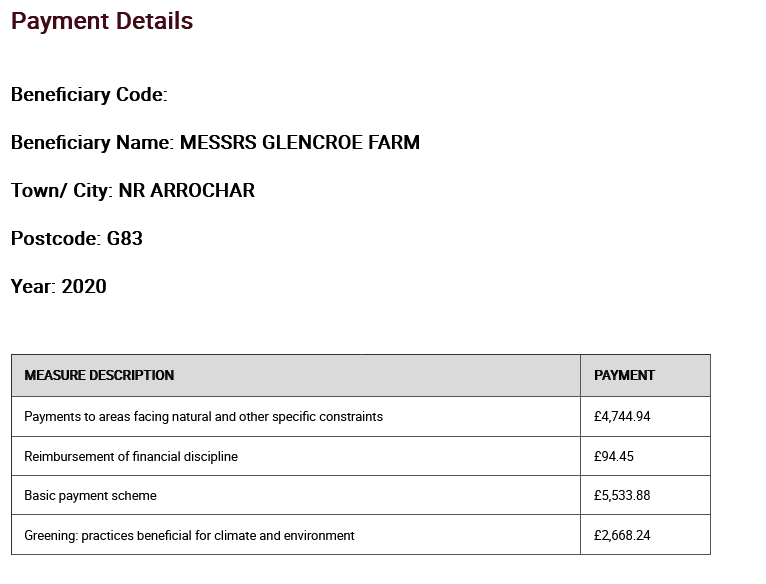
The total comes to over £13k, £4,744.94 of which was for areas facing natural constraints – landslips one wonders? – and £2,668.24 of which was for “greening practices”. Had that money been compensation for ending all grazing on the landslip prone slopes it might have made sense. Instead, the Scottish Government’s rural payments division appears to have paid the landowner to continue to graze the landslip prone slopes on Glen Croe Farm and saw no contradiction between its actions and those of Transport Scotland who were spending a fortune on engineering works to prevent further landslips both above and below the A83:
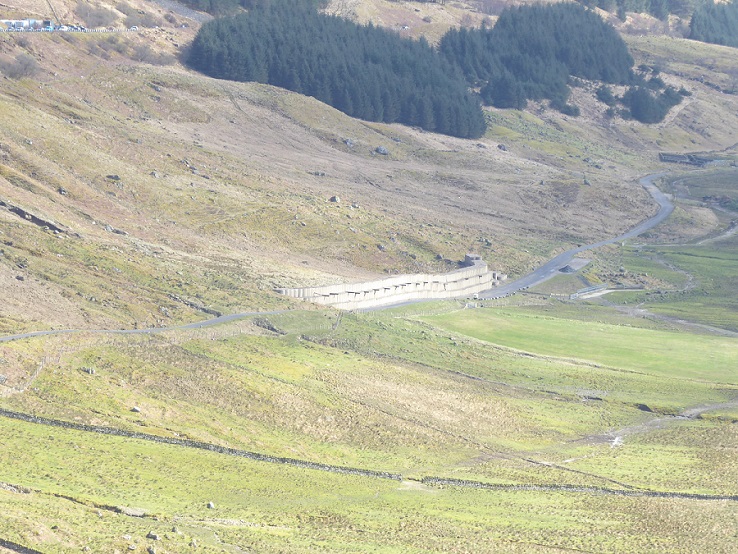
The payments continued but at a much reduced level in 2021:

The Rural Payments database does not show what was paid in 2022 but today I received the information in response to a Freedom of Information request to the Scottish Government:
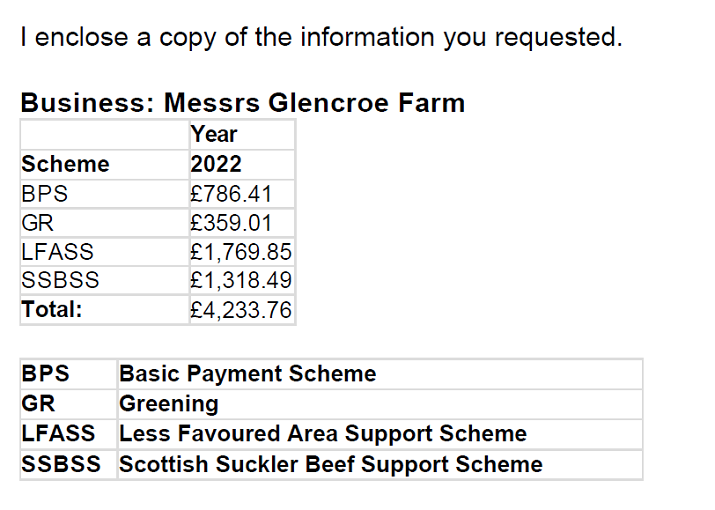 That confirms the Scottish Government is still subsidising the owners of the Glen Croe Farm to graze the cattle I saw on the slopes of Beinn Luibhean at the end of April:
That confirms the Scottish Government is still subsidising the owners of the Glen Croe Farm to graze the cattle I saw on the slopes of Beinn Luibhean at the end of April:
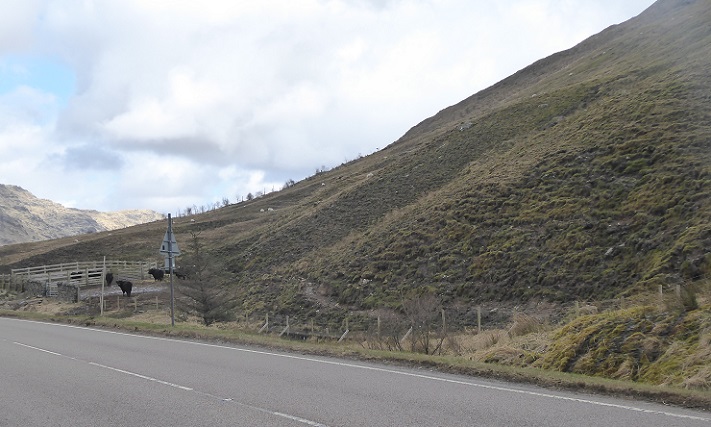
This is a classic example of unjoined up government, even if the subsidy is chicken feed compared to the almost £1m paid out by Transport Scotland to Glen Croe Farm (see here) for the occasional use of the Old Military Road below the A83.
What needs to happen
If the cost of FLS acquiring 736 hectares on Beinn Luibhean was £600k, as suggested by their acquisitions register, then the cost of acquiring the remaining 94 ha owned by Glen Croe farm should have been less than that, even though it includes the better ground. Instead of compulsorily acquiring the land in the public interest, however, the Scottish Government continues to hand money willy nilly to the apparent owner, Diane Davidson-Kinghorn. That needs to stop and the rest of Glen Croe farm to be bought sooner rather than let.
The Loch Lomond and Trossachs National Park Authority was set up in large part to enable more co-ordinated management of the countryside in the interests of conservation, recreation and a sustainable economy. Unfortunately, like the Scottish Government and other Public Authorities it is completely in thrall to private landowning interests and Diane Davidson-Kinghorn appears to be the same Diane Davidson Kinghorn who was once on the LLTNPA Board (as recorded in the Luss-Arden Community Action Plan 2008-11)!
Until and unless the Scottish Government is prepared to remove those interests from its board and the LLTNPA is allowed to tackle them, all the aspirations for restoring nature and addressing the climate emergency contained in its draft National Park Partnership Plan launched two weeks ago (see here) will come to naught. If the LLTNPA cannot speak out and tackle the continued overgrazing of the slopes at the Rest and Be Thankful, where large sums of public money are being spent, it won’t tackle these anywhere.

here we go around the groundhog day, deja vu, square one Maypole yet again
It must be decades now since since you and Derek first flagged this issue, but good to see you are still on the case. I am not convinced that trees would stop the severe landslip events – see my comments below – but it is complete madness for the authorities to still be paying public money to the landowner for him to graze sheep on these slopes. And not to have compulsorary purchased the land so they don’t need to keep making millions of pounds in payments to use the old military road.
In spite of what many people are saying, I doubt if tree planting will prevent further landslips at the Rest and Be Thankful. These occur down the watercourses, not the slope as a whole, during extreme rainfall events.
Grazed slopes such as these produce tightly grazed vegetation which is relatively resistant to erosion. Additionally, landslides through forested slopes can be observed in Scotland, for example the ones down the east side of Loch Lomond in the mid 1980s, again down the watercourses.
Tree planting would be a waste of taxpayers’ money in my view!! The only long-term solution is to move the road to the south side of the glen.
Wrong. I’ve seen a photo of the hillside showing the location of all the landslips. They don’t all start lower down, some began near the top. I believe that many decades of rewooding (?) the slope would develop a thick, water-retentive layer releasing rainfall over days and weeks rather than hours.
You’re right that the solution is to move the road to the South side, which isn’t quite as steep, hence it has commercial planting which can be mechanically harvested.
Possibly but probably not. See my comment above. In extreme rainfall events the vegetation cover does not make much or any difference. Trees may reduce the frequency of minor or intermediate landslip events, but once land and soils get 100% saturated (which typically can happen after a week or so of wet rain) can be gravity and geology / topography is key, no matter what the vegetation cover. But that said tree cover and less grazing would do no harm and would be welcome for other environmental reasons.
There is an interesting debate to be had about merits of grass swards v trees for slope stability BUT there is no grass sward in the area above the A83 which belongs still to Glen Croe farm. As my photo showed it is completely churned up by the feet of livestock. When I saw it in April my initial question was whether this was not part of some woodland creation scheme, get cattle in, churn up the ground and then remove them leaving a fertile soil for trees to seed. There is no such plan.
On grassy swards, my observations are that grassy slopes do offer good protection against erosion along the banks of rivers – and are far more resistant to water than the rip rap bouldering that is used in river engineering and so often fails. However, short grassy swards also promote faster water run-off, increasing the volume of water flowing down water courses and creating new ones and therefore may help explain your observation that many of the landslips seem associated with watercourses
Yes, there was an similar gorge created overnight in woods above Loch Awe in the 1980s. Tree planting may help reduce the magnitude and frequency landslip events and severe erosion, but may not. It depends on the geology and topography, and the longevity and severity of the rainfall event. Once land / soils on steep slopes become totally saturated and are then hit by yet more ustained raibfall or extreme run-off event, it does not really matter much what the vegetation / land use is, gravity is going to win, and soils and rocks and any vegetation growing there are going to start heading downward. These mountains were carved by ice and It’s only 10,000 years since the last ice age ended, so withe the ice sheet gone, rocks and thin soils have ben left in precarious places. So despite the fact that our mountains and rocks are hundreds of millions of years old, we effectively have a relatively young / fresh landscape still prone to severe erosion / landslip events, and we will do so for many thousands of years.